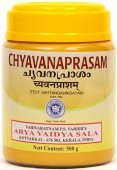Tamalaki, Tāmalakī, Tamālaki: 12 definitions
Introduction:
Tamalaki means something in Hinduism, Sanskrit, biology, Tamil. If you want to know the exact meaning, history, etymology or English translation of this term then check out the descriptions on this page. Add your comment or reference to a book if you want to contribute to this summary article.
In Hinduism
Ayurveda (science of life)
Cikitsa (natural therapy and treatment for medical conditions)
Source: Wisdom Library: Ayurveda: CikitsaTāmalakī (तामलकी) is a Sanskrit word referring to Phyllanthus amarus, a small herb from the Phyllanthaceae family of flowering plants. It is also known as Bhūmyāmalakī. It is used throughout Ayurvedic literature such as the Caraka-saṃhitā. Its medicinal uses include stomach related problems. The plant is also used in gonorrhea, menorrhagia and other genital conditions.
This plant (Tāmalakī) is also mentioned as a medicine used for the treatment of all major fevers (jvara), as described in the Jvaracikitsā (or “the treatment of fever”) which forms the first chapter of the Sanskrit work called Mādhavacikitsā.
Kalpa (Formulas, Drug prescriptions and other Medicinal preparations)
Source: Ancient Science of Life: Evaluation of Cyavanaprāśa on Health and Immunity related Parameters in Healthy ChildrenTāmalakī (तामलकी) refers to the medicinal plant known as Phyllanthus niruri, Pl., and is used in the Ayurvedic formulation known as Cyavanaprāśa: an Ayurvedic health product that helps in boosting immunity.—Cyavanaprāśa has been found to be effective as an immunity booster, vitalizer and a preventer of day to day infections and allergies such as common cold and cough etc. It is a classical Ayurvedic formulation comprising ingredients such as Tāmalakī. [...] Cyavanaprāśa can be consumed in all seasons as it contains weather friendly ingredients which nullify unpleasant effects due to extreme environmental and climatic conditions.
Source: Shodhganga: Edition translation and critical study of yogasarasamgrahaTāmalakī (तामलकी) refers to the medicinal plant known as “Phyllanthus amarus Schum. & Thonn.” and is dealt with in the 15th-century Yogasārasaṅgraha (Yogasara-saṅgraha) by Vāsudeva: an unpublished Keralite work representing an Ayurvedic compendium of medicinal recipes. The Yogasārasaṃgraha [mentioning tāmalakī] deals with entire recipes in the route of administration, and thus deals with the knowledge of pharmacy (bhaiṣajya-kalpanā) which is a branch of pharmacology (dravyaguṇa).

Āyurveda (आयुर्वेद, ayurveda) is a branch of Indian science dealing with medicine, herbalism, taxology, anatomy, surgery, alchemy and related topics. Traditional practice of Āyurveda in ancient India dates back to at least the first millenium BC. Literature is commonly written in Sanskrit using various poetic metres.
Biology (plants and animals)
Source: Wisdom Library: Local Names of Plants and DrugsTamalaki [तमालकी] in the Sanskrit language is the name of a plant identified with Phyllanthus fraternus G.L.Webster from the Phyllanthaceae (Amla) family having the following synonyms: Phyllanthus fraternus subsp. togoensis. For the possible medicinal usage of tamalaki, you can check this page for potential sources and references, although be aware that any some or none of the side-effects may not be mentioned here, wether they be harmful or beneficial to health.
Source: Google Books: CRC World Dictionary (Regional names)Tamalaki in India is the name of a plant defined with Garcinia xanthochymus in various botanical sources. This page contains potential references in Ayurveda, modern medicine, and other folk traditions or local practices It has the synonym Garcinia pictoria (Roxb.) Engl. (among others).
Example references for further research on medicinal uses or toxicity (see latin names for full list):
· Plants of the Coast of Coromandel (1805)
· Journal of Cytology and Genetics (1980)
· Memoirs of the Wernerian Natural History Society (1826)
· Annals of the Missouri Botanical Garden
· The Flora of British India (1874)
· Species Plantarum (1753)
If you are looking for specific details regarding Tamalaki, for example extract dosage, diet and recipes, chemical composition, side effects, pregnancy safety, health benefits, have a look at these references.

This sections includes definitions from the five kingdoms of living things: Animals, Plants, Fungi, Protists and Monera. It will include both the official binomial nomenclature (scientific names usually in Latin) as well as regional spellings and variants.
Languages of India and abroad
Sanskrit dictionary
Source: Cologne Digital Sanskrit Dictionaries: Shabda-Sagara Sanskrit-English DictionaryTāmalakī (तामलकी).—f. (-kī) A plant, (Flacourtia cataphracta:) see mūmyāmalakī. E. tam to desire, to be as it were, or resemble, āmalakī the Amalaki, tama ṇic kvip tān karmadhā0 .
Source: Cologne Digital Sanskrit Dictionaries: Monier-Williams Sanskrit-English Dictionary1) Tamālakī (तमालकी):—[from tamālaka > tam] f. = tamakā, [Nighaṇṭuprakāśa]
2) Tāmalakī (तामलकी):—[from tāmala > tāma] f. Flacourtia cataphracta, [Suśruta vi, 39, 197 and 203; 51, 25.]
Source: Cologne Digital Sanskrit Dictionaries: Yates Sanskrit-English DictionaryTāmalakī (तामलकी):—(kī) 3. f. A plant (Flacourtia cataphracta).
[Sanskrit to German]
Sanskrit, also spelled संस्कृतम् (saṃskṛtam), is an ancient language of India commonly seen as the grandmother of the Indo-European language family (even English!). Closely allied with Prakrit and Pali, Sanskrit is more exhaustive in both grammar and terms and has the most extensive collection of literature in the world, greatly surpassing its sister-languages Greek and Latin.
Kannada-English dictionary
Source: Alar: Kannada-English corpusTāmalaki (ತಾಮಲಕಿ):—
1) [noun] the small tree Phyllanthus emblica of Euphorbiaceae family.
2) [noun] its fruit.
Kannada is a Dravidian language (as opposed to the Indo-European language family) mainly spoken in the southwestern region of India.
Tamil dictionary
Source: DDSA: University of Madras: Tamil LexiconTamālaki (தமாலகி) noun < tāmalakī. Forest small-leaved featherfoil. See கீழாநெல்லி. (தைலவருக்கச்சுருக்கம் தைல.) [kizhanelli. (thailavarukkachurukkam thaila.)]
--- OR ---
Tāmalaki (தாமலகி) noun < tāmālakī. Niruri. See கீழாநெல்லி. (வைத்திய மலையகராதி) [kizhanelli. (vaithiya malaiyagarathi)]
Tamil is an ancient language of India from the Dravidian family spoken by roughly 250 million people mainly in southern India and Sri Lanka.
See also (Relevant definitions)
Starts with: Tamalakiri.
Full-text: Tamalakiri, Vitunnaka, Arkku, Bhumyamalaki, Tamalaka, Talisha, Amalaka, Cyavanaprasha.
Relevant text
Search found 3 books and stories containing Tamalaki, Tāmalakī, Tamālakī, Tāmalaki, Tamālaki, Thamalaki, Thaamalagi, Damalagi, Dhamalagi, Thamalagi, Thamaalagi; (plurals include: Tamalakis, Tāmalakīs, Tamālakīs, Tāmalakis, Tamālakis, Thamalakis, Thaamalagis, Damalagis, Dhamalagis, Thamalagis, Thamaalagis). You can also click to the full overview containing English textual excerpts. Below are direct links for the most relevant articles:
Sushruta Samhita, Volume 6: Uttara-tantra (by Kaviraj Kunja Lal Bhishagratna)
Chapter LI - Symptoms and Treatment of Asthma (Shvasa) < [Canto III - Kaya-chikitsa-tantra (internal medicine)]
Chapter XXXIX - Symptoms and Treatment of Fever (Jvara) < [Canto III - Kaya-chikitsa-tantra (internal medicine)]
The Agni Purana (by N. Gangadharan)
Atharvaveda and Charaka Samhita (by Laxmi Maji)
2b. Tuberculosis (Yakṣmā or Rājayakṣmā) in the Caraka-Saṃhita < [Chapter 5 - Diseases and Remedies in Atharvaveda and Caraka-Saṃhitā]
Related products




